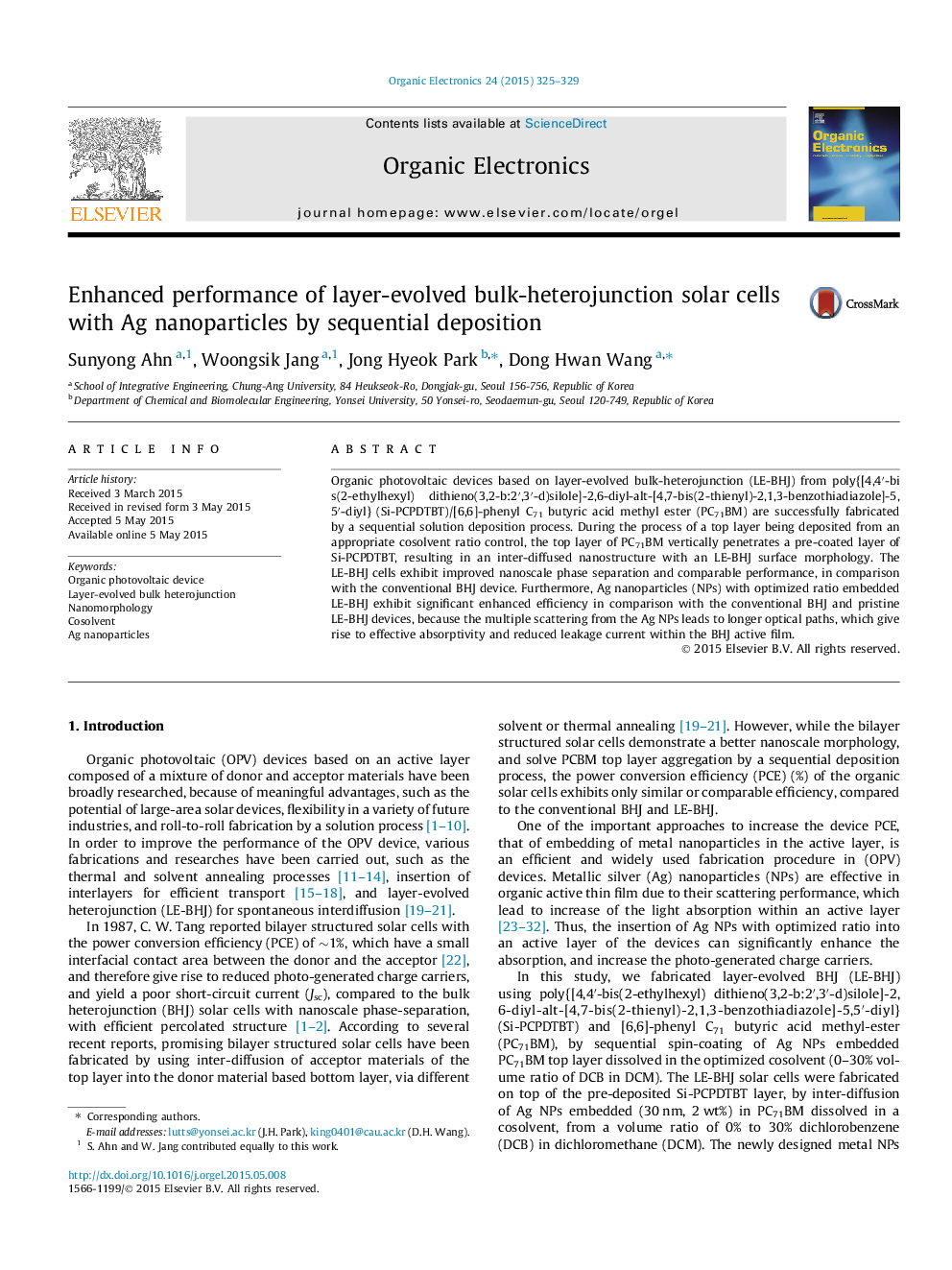| Article ID | Journal | Published Year | Pages | File Type |
|---|---|---|---|---|
| 1263715 | Organic Electronics | 2015 | 5 Pages |
•Layer-evolved (LE) BHJ solar cells have been fabricated by sequential deposition.•Improved nanoscale phase separation was observed in LE-BHJ via optimized cosolvent.•Ag nanoparticles (NPs) embedded LE-BHJ exhibit significant enhanced device efficiency.•Ag NPs plays an important role of enhanced light absorption and reduced leakage current.•Newly designed metal NPs embedded LE-BHJ leads to the improvement of device technology.
Organic photovoltaic devices based on layer-evolved bulk-heterojunction (LE-BHJ) from poly{[4,4′-bis(2-ethylhexyl) dithieno(3,2-b:2′,3′-d)silole]-2,6-diyl-alt-[4,7-bis(2-thienyl)-2,1,3-benzothiadiazole]-5,5′-diyl} (Si-PCPDTBT)/[6,6]-phenyl C71 butyric acid methyl ester (PC71BM) are successfully fabricated by a sequential solution deposition process. During the process of a top layer being deposited from an appropriate cosolvent ratio control, the top layer of PC71BM vertically penetrates a pre-coated layer of Si-PCPDTBT, resulting in an inter-diffused nanostructure with an LE-BHJ surface morphology. The LE-BHJ cells exhibit improved nanoscale phase separation and comparable performance, in comparison with the conventional BHJ device. Furthermore, Ag nanoparticles (NPs) with optimized ratio embedded LE-BHJ exhibit significant enhanced efficiency in comparison with the conventional BHJ and pristine LE-BHJ devices, because the multiple scattering from the Ag NPs leads to longer optical paths, which give rise to effective absorptivity and reduced leakage current within the BHJ active film.
Graphical abstractFigure optionsDownload full-size imageDownload as PowerPoint slide
